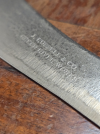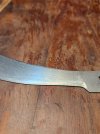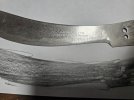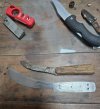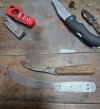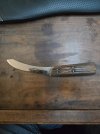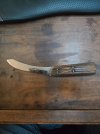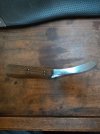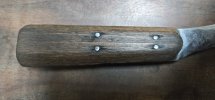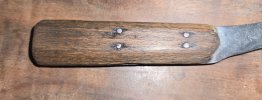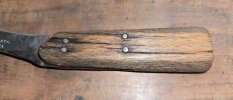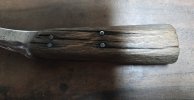vsndesigns
Gold Member
- Joined
- Apr 14, 2023
- Messages
- 58
Appreciate all the history, insights, and debates. This has been one heck of a learning experience. I walked in thinking I had a butter knife and came out learning the deeper history of J. Russell, Green River, stamping versus etching, and the realities of mass production. I kinda wish I took proper before and after pics, but honestly, I was just excited to get all the rust and crud off. I threw everything at it. LA Awesome, 30 percent vinegar, acetone, Navy Rust Jelly, then started sanding from 400 grit down to 10k grit papers, back up through 1600 to 10k diamond paste, and soon it will hit diamond paste up to 80k. Mirror finish maybe. Redemption absolutely. Every tool tells a story. This blade has been through butcher shops, endured history, survived the years. Handleless, beaten, but never broken. I am not chasing factory perfection or collector-grade resale. I am giving a discarded blade a second life, with polish and ruby, a nod to the blood, sweat, and survival it represents. Diamond stamp or not, this blade has earned its place. When I am done, it will not just be a knife. It will be proof that beauty can be reborn from the scrap heap. Thanks to everyone who shared their knowledge. I will post the finished result soon, having issues getting time on a lapidary wheel. Some blades were made to be resurrected, not retired in my honest opinion.


